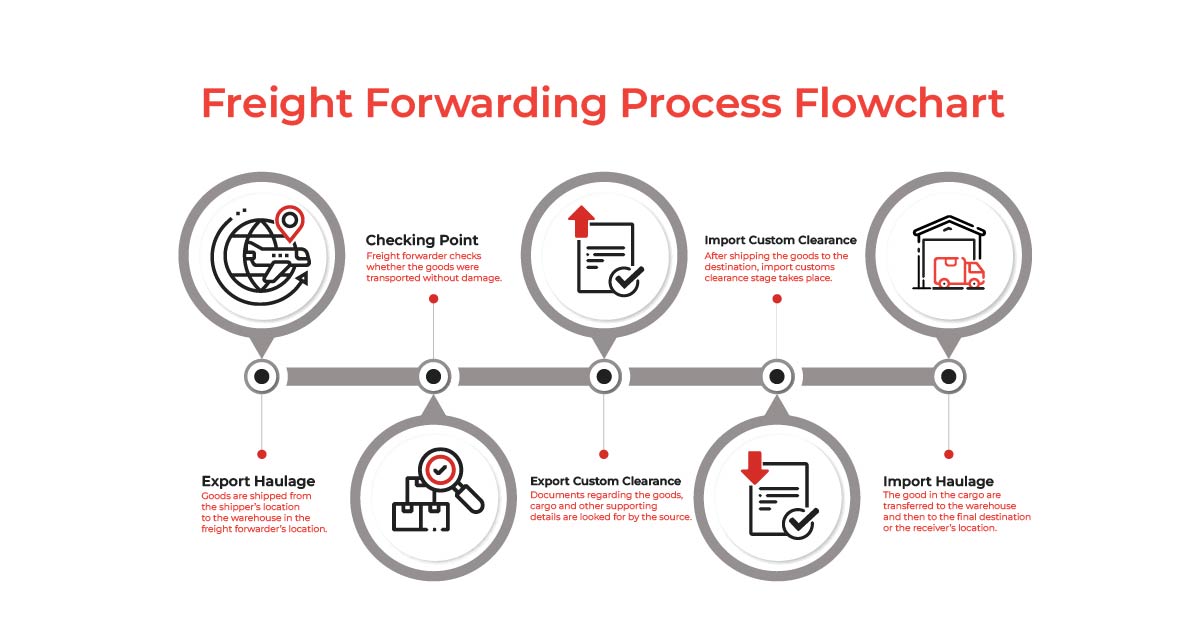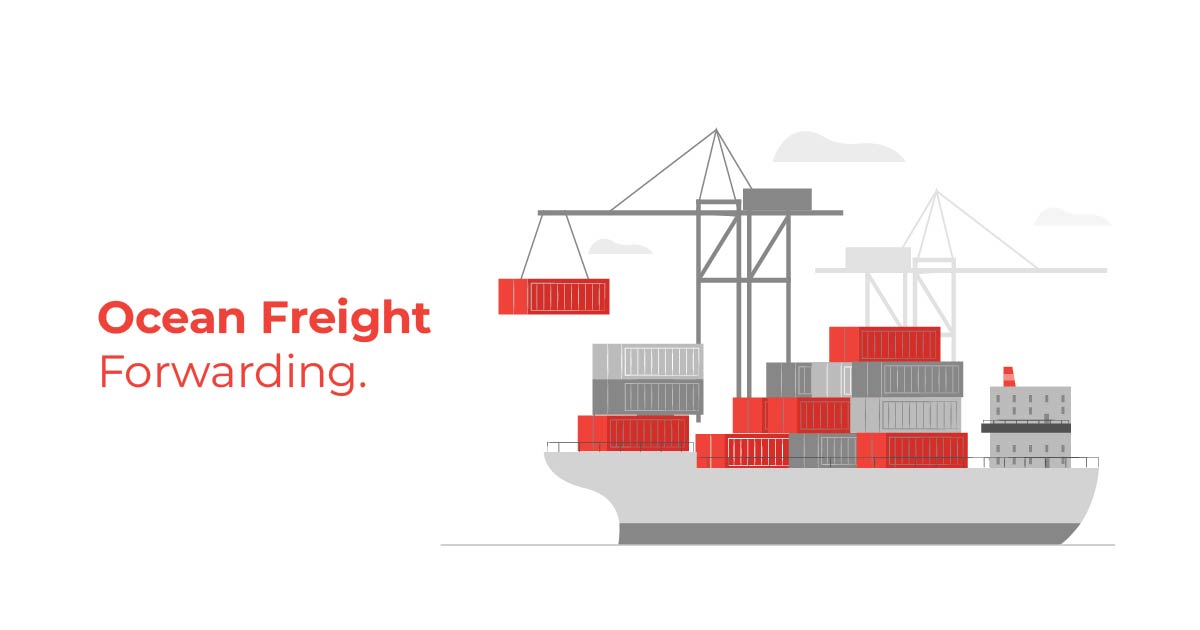
Freight forwarding is the method of planning and coordinating the shipment of commodities across regions, cities, a nation, or international borders on behalf of shippers for eCommerce businesses. This is done through multiple carriers like marine, rail, air or the highway. Moreover, other responsibilities include supplying cargo insurance, warehousing planning and customs brokerage.
What is freight forwarding for shippers? For shippers, freight forwarding is the strategic organizing and execution of logistics transportation of products from one place to another on their behalf. Especially, the role of freight forwarders includes freight rate negotiations, customs paperwork, cargo tracking, freight aggregation, etc.
Organisations that are capable to implement smart shipment plans, for them importing and exporting can be a powerful source of generating revenue. Regardless, international shipment logistics are a little difficult to manage.
It entails the following:
- The differing know-how of customs rules and protocols of different countries.
- Efficient problem-solving system is mandatory due to any unforeseen turmoil by technology, weather or human nature.
- Network development is necessary as the strength of a supply chain is as strong as the parties that are driving it.
You can streamline and fast-pace some of the tasks by leveraging the right tools for warehouse management. Now, let’s look at what is freight forwarding in detail through the roles and responsibilities of a freight forwarder.
What is the Role of Freight Forwarders?
Once we understand the responsibilities of a freight forwarder we will get more clarity on the freight forwarding process in logistics. It’s not simply limited to transportation as the name suggests but much more. Let’s have a deeper look:
Tracking the shipment
Shipment tracking is the primary and pivotal role of a freight forwarder. Freight forwarders leverage a Transportation Management System (TMS) to strengthen visibility and get a better understanding of the freight forwarding process which helps track every stage of a shipment’s voyage.

Freight forwarding process flowchart
Stage 1: Export Haulage : Goods are shipped from the shipper’s location to the warehouse in the freight forwarder’s location
Stage 2: Checking Point : Freight forwarder checks whether the goods were transported without damage.
Stage 3: Export Custom Clearance : Documents regarding the goods, cargo and other supporting details are looked for by the source
Stage 4: Import Custom Clearance : After shipping the goods to the destination, import customs clearance stage takes place
Stage 5: Import Haulage : The good in the cargo are transferred to the warehouse and then to the final destination or the receiver’s location.
Customs Brokerage
Customs brokerage needs special licensure, that is, a customs brokerage license. Only the licensed brokers are qualified to submit the documentation necessary to close the logistics processes. You can check out Prozo for end-to-end assistance in warehouse management.
Storage and Warehousing
Freight forwarders also arrange storage space for the goods at warehouse owned and operated by an affiliate.
Bargaining
Another responsibility is to bargain with carriers to choose a cost-efficient shipping rate which is quite tricky. The art of this deal involves balancing the carriers’ interests and the benefits and cons of your cargo type, space/tonnage requirements, time flexibility, credit status, and more.
Scheduling the Cargo Space
Smart scheduling of cargo space is one of the most crucial skills of a forwarder. If you hire a freight forwarder for managing logistics, you can gauge their skills by how efficient they are at scheduling space itself. Similarly, to answer ‘what is freight forwarding’, all these nitty-gritty details need to be considered to fully understand.
Consolidating Freight
The role of freight forwarders includes tactically consolidating freight. You may have multiple customers who need their goods but do not use of an entire container. In this case, multiple smaller consignments are all booked aboard the same container. Then, the shipping cost is equal among all participating customers and thereby making the journey a cost-effective one.
Supplying Cargo Insurance
Freight forwarders can help you with freight insurance or a cargo insurance policy. Cargo insurance ensures a reimbursement for the loss in case the goods get stolen or damaged in the transit. You can check out Unbox which is one of the best supply chain platforms for eCommerce businesses.
Now that you know what is freight forwarding clearly, let’s look at the types of forwarding and what they are best for.
Types of Freight Forwarding
Now that we have clarity on what is freight forwarding, let’s see what are the types of freight forwarding? There are multiple types of freight forwarding that eCommerce businesses can leverage to deliver products reliably across the nation or even borders. Now, whether to send by ocean freight forwarding or air freight forwarding, is determined by the destination and the shipping address and also by timeline. However, let’s look at the different types of freight forwarding to understand better.
1. Ground Freight
The method of transporting goods and commodities by road is called ground freight transportation. Moreover, this shipping method is also known as door-to-door delivery. It’s primarily used for local deliveries of goods through highways- mostly for intercity. Trucks are used for loading and unloading freight.
Moreover, a standard-sized truck has the capacity to transport around 26 pallets. And this is a cost-effective pick even though it may be expensive depending on traffic, road turmoil, and infrastructural issues.
2. Air Freight Forwarding

When you are expected to deliver goods as quickly as possible, air freight forwarding becomes the ideal route to use for shippers. Air freight forwarding process makes use of cargo planes, which are perfect for transporting commodities both across the nation and borders.
Now, this option may be considered a high-end or expensive choice, but it is the most efficient method of transporting commodities and goods for both local and international shipments.
3. Ocean Freight Forwarding

Sea or Ocean Freight Shipping is a method of transporting goods through seas. Now, this is one of the types of freight forwarding which is largely used for international shipping, thereby making use of large ships and ferries to move cargo across oceans.
When it comes to shipping cars, motorcycles, and huge containers, it is the most traditional and oldest method available for both domestic and international transportation. It’s one of the safest options with only one disadvantage – it may be more time-consuming than other forms.
But, it is one of the most affordable forms of transportation for goods and merchandise. Hence, large businesses rely on it for larger goods.
4. Rail Freight Forwarding
If your budget is tight, you might like to consider this environmentally-friendly choice of transporting goods. This is claimed to be a more expedient and cost-effective solution for freight shipping than other methods.
But what makes it the most reliable option? The fact that rail freight forwarding faces no traffic or any hindrance during its journey makes this a safe and cost-effective choice to transport cargo. It is used to ship both domestically and internationally.
Through this blog, you might have clearly understood what is freight forwarding and its processes. Freight forwarding isn’t just about transporting goods but also involves numerous processes to ensure that the goods are shipped without damage. It plays a crucial role in any business as it facilitates faultless import and export systems.
You can leverage a plethora of tools and platforms designed for eCommerce business growth to scale your venture further. This way, you can make an informed decision after understanding the operations involved in freight forwarding.







